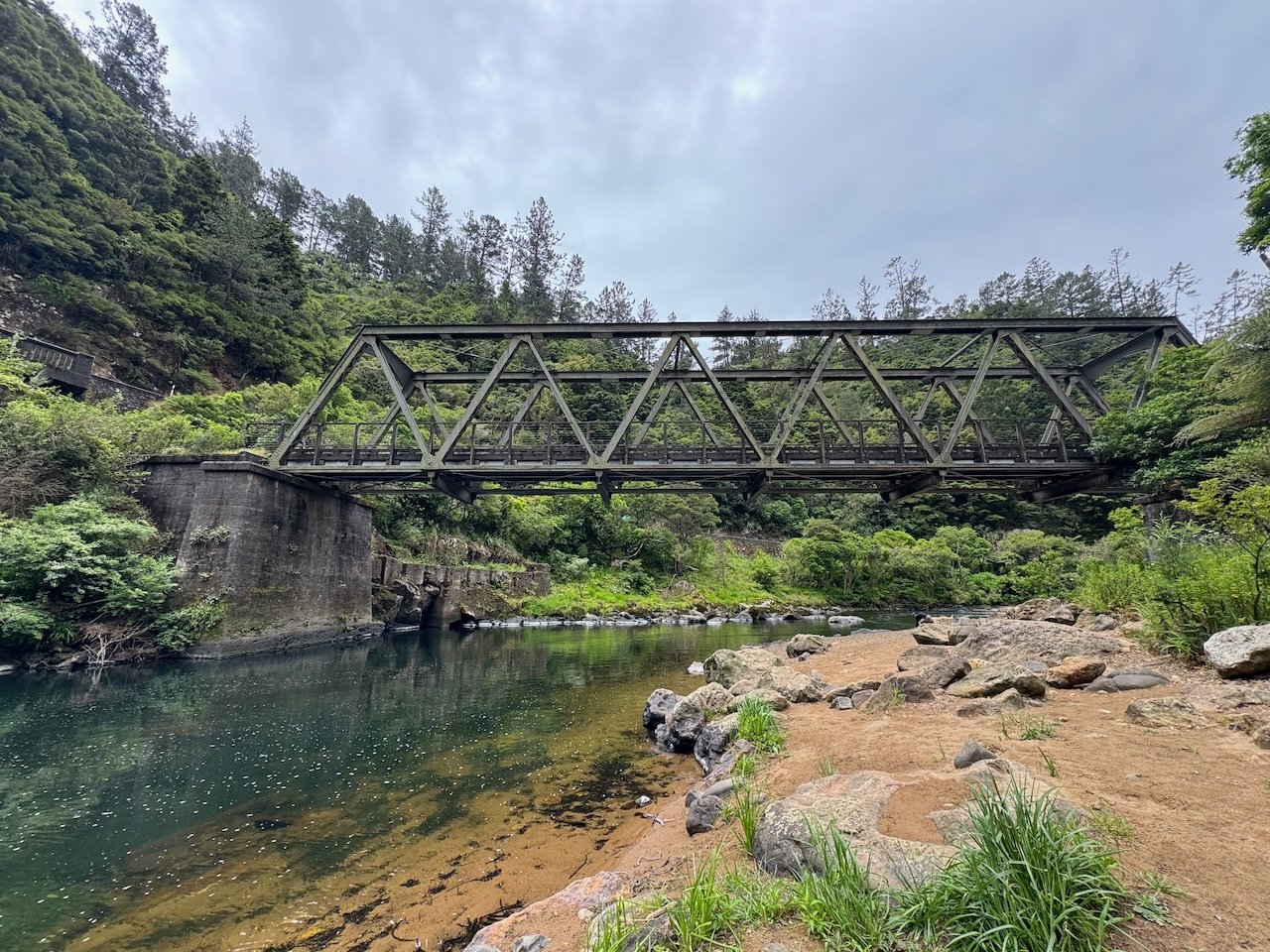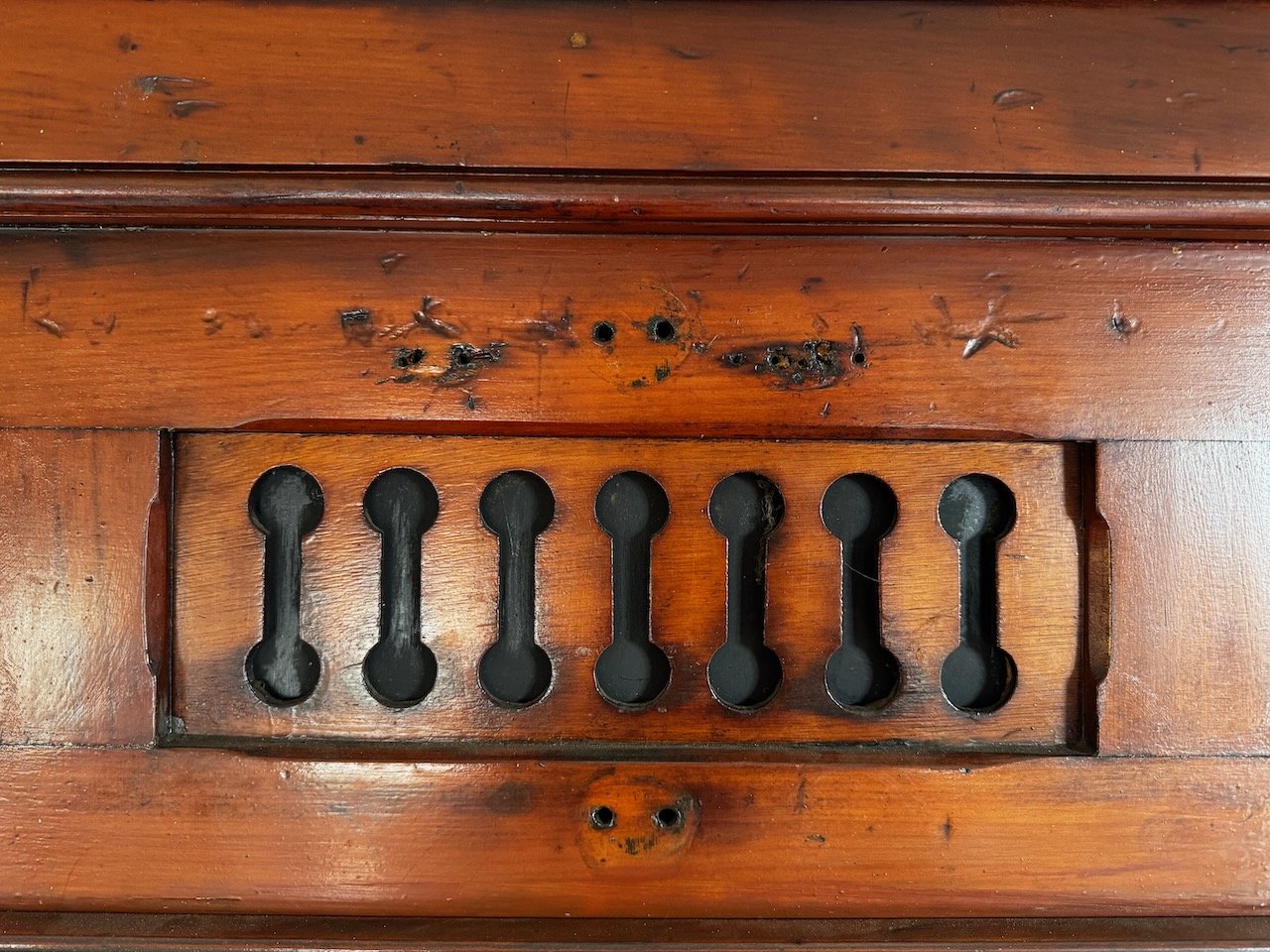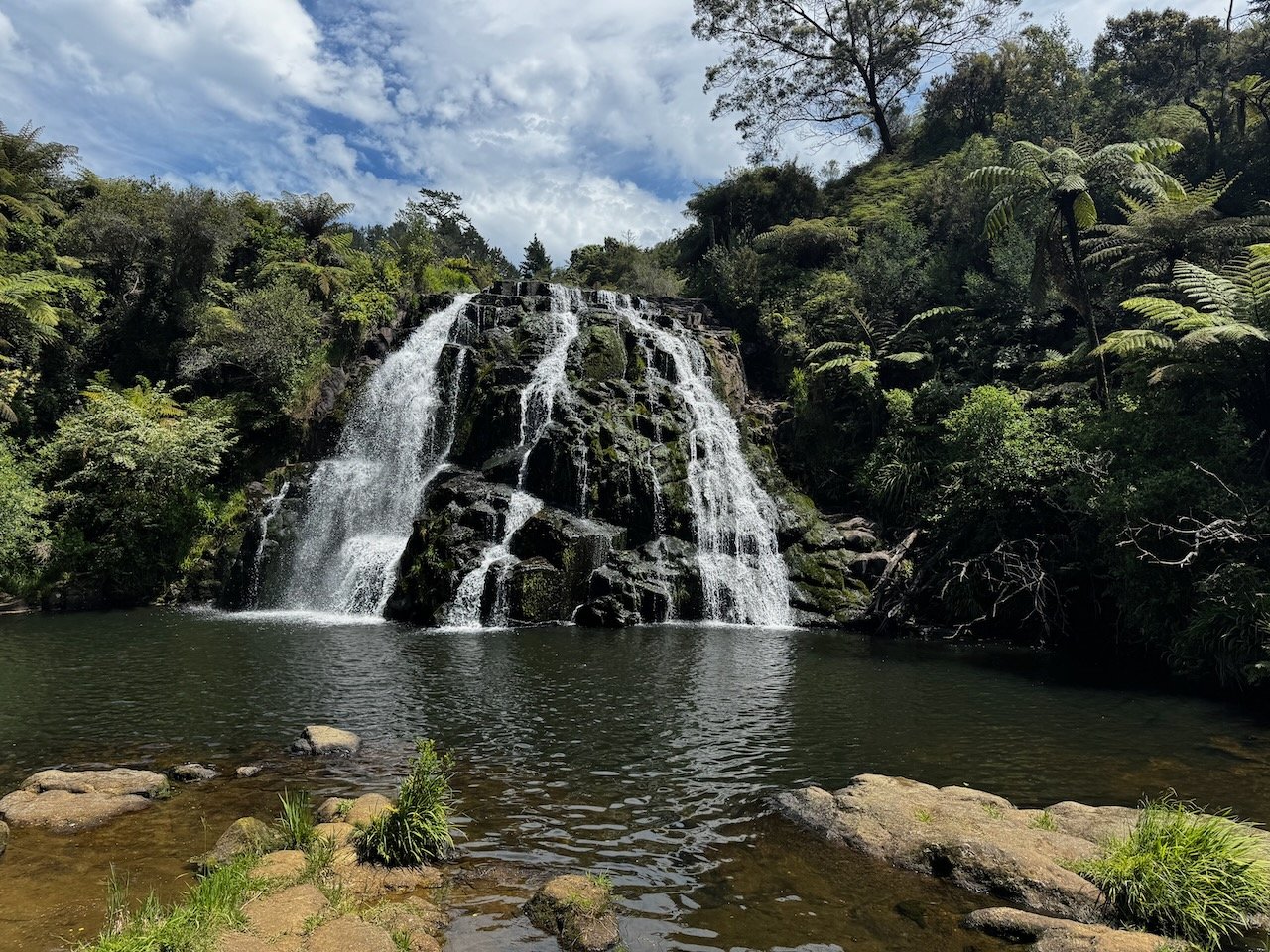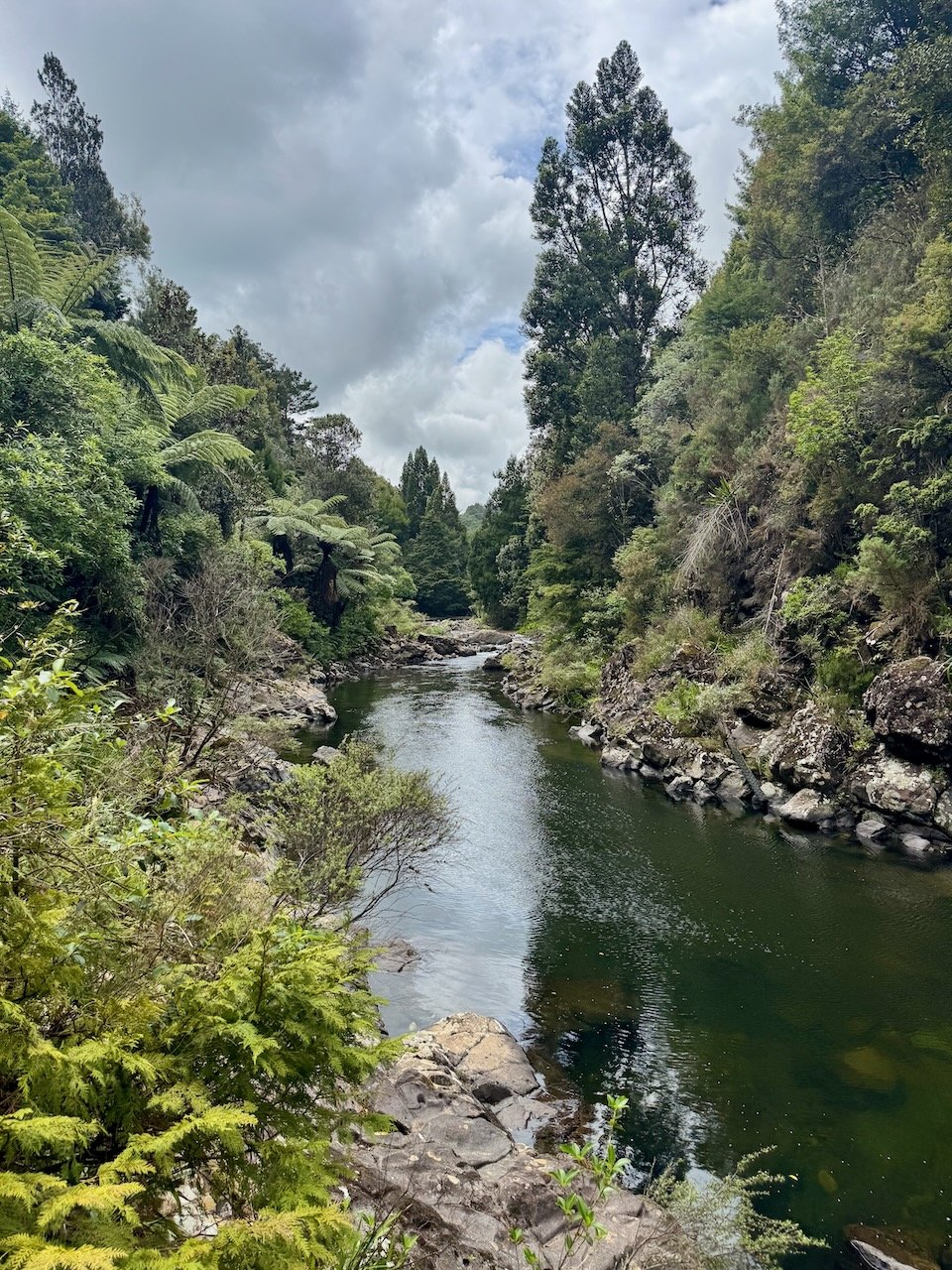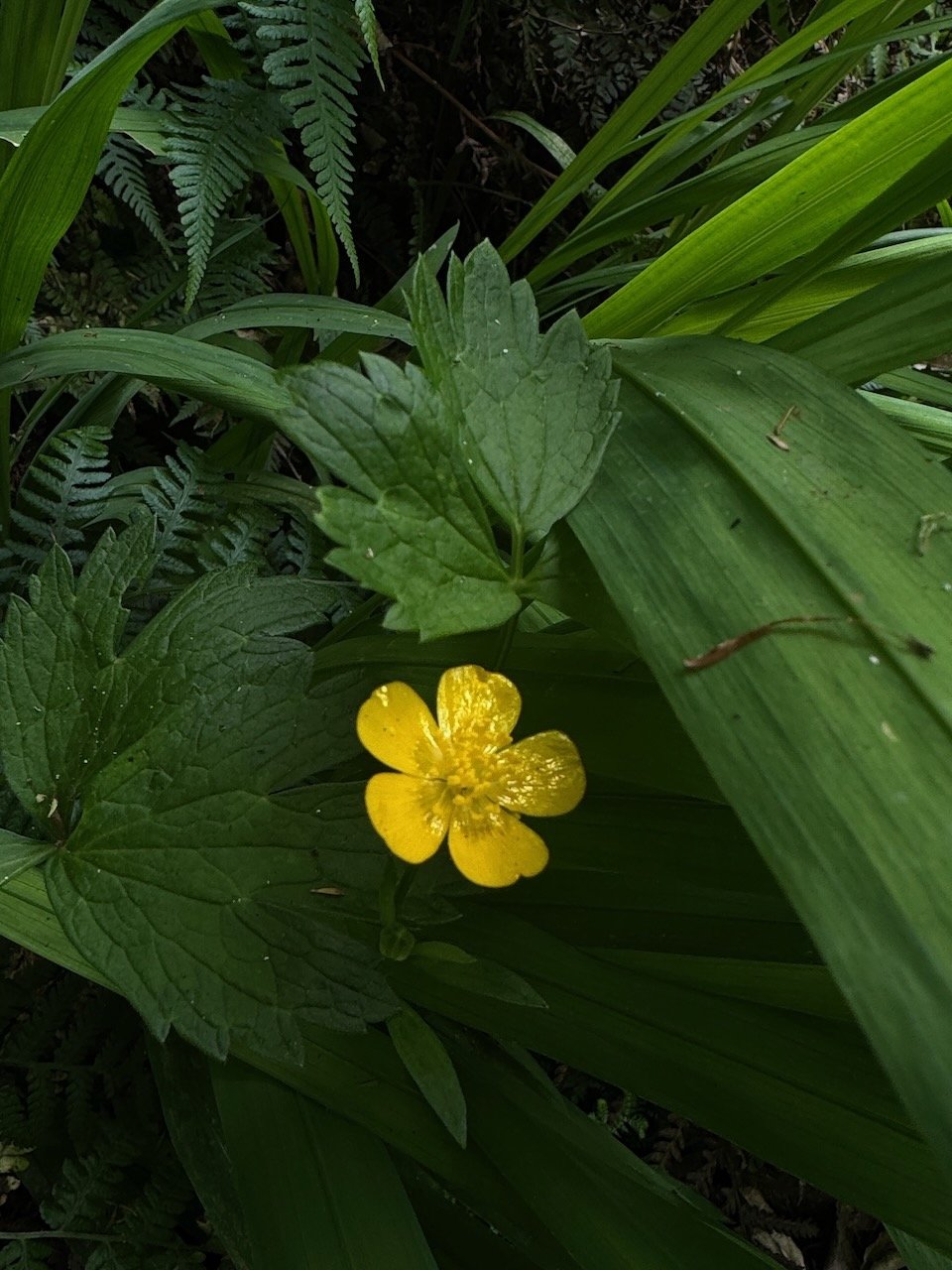Hauraki Rail Trail: Sections B-C ~ Nov 10-14, #5
From Thames, the rail trail heads South flanked by the Kaimai Ranges through the Waikato Valley, home to the most dairy farms in the country. After riding a straight gravel line through a green swath of paddocks, up and over so many irrigation channels we lost count, a sign appeared on the side of the trail. Without hesitation, we took the slight detour for coffee, baked goods and of course, a selection of cheeses at the Mataioki CheeseBarn, hoping we would still have enough time to out run the rain clouds building behind us. A few kilometers shy of Paeora, the clouds could no longer hold their bounty and let go in a torrent just as a one of the trailside shelters appeared up ahead. Once it was obvious a break was not coming, we donned our full rain gear and rode to the edge of town to find the only RV park, filled with long-term caravan residents, mixed with caravan rentals, and a massive boat shed all walled in by a 6’ high corrugated fence.
Paeroa
It was here in the most unlikely of RV parks, that we met a solo bikepacker also taking refuge from the weather to dry out and resupply. He had traveled here from Spain on his first bikepacking trip to ride the Te Araroa and document his journey. His curiosity about our approach to traveling on two wheels with no set agenda and no time constraints lead to a free-flowing exchange reflecting on the “whys” and hows” of this lifestyle with one that understood the spirit of adventure and what compels exploration in all its forms.
The next morning the skies had cleared and we wished him well, as he was heading further South, and we were following the trail East to explore the out-and-back, side route through the gorge and an 1100 meter tunnel.
Karangahake Gorge to Waihi
Once again, we were following a section of rail trail birthed at a time when gold was the driving force behind man’s desire to bore through solid rock and spew its contents laced with chemicals back onto the ground. Admittedly, the engineering feats were a bit lost on me, other than - the trail left behind, making it possible, centuries later, for us to ride an almost imperceptible grade through the belly of a mountain to gape at the wonder of a gorge, the river that carved it, and a forest persisting through centuries around it - more impressive than any mineral hidden underneath.
On the other side of the tunnel, the trail follows along the Ohinemuri River on the old rail bed, and then a section of old tramway, where deep cuttings were carved to keep the gradient even. Along the way, we puzzled over why the river was flowing west away from the coastline until we found a sign board explaining the course of the river originated 3-4 million years ago, even as the fault line slowly formed the Kaimai Ranges in the last 2 million years, the river chose to stay its course west, carving its way through ancient volcanic rock that is now known as the Karangahake Gorge.
Karangahake Gorge & Ohinemuri River
Victoria Battery, Waikino Bridge, Tramway
Waihi Railway Station
The trail ends in Waihi at the railway station for the Goldfields Railway, still in operation over the weekends as a tourist attraction using a steam locomotive to Waikino and back. Behind the railway station, was a strip of grass designated as a campground, where a local cyclist we first met in Miranda was already camped. We spent the evening listening to his stories of life in New Zealand and his travels around the world on foot and by bike. The next morning the three of us rode back up the trail to Waikino for lunch at the railway station and then parted ways as we detoured up the road past the falls to Dickeys Flat to hopefully find our first camp spot tucked into the forest.
Owharoa Falls & Dickeys Flat
It was a short walk to the base of the Owharoa Falls, a three-part staircase waterfall that empties into the Ohinemuri river. We then climbed straight up past the top of the falls into farmland scanning the skyline for anything that resembled the edge of the forest. Several steep hills later, a sign for Dickeys Flat and a gravel road that wound down to a small parking area and the edge of the Waitawheta River. Finally, enveloped in the towering trees full of plant life and mosses with the sound of the river dancing through the rocks, we were as close to home as we could get.
At the end of the campground was the start of the Crown track, one of the many trails through the area. This one crossed the river and followed its edges through the forest for a short distance to a hand-carved tunnel, another permanent marker of mining and logging activity left behind; now transformed centuries later, into an unnatural wonder hidden within the landscape.
We took turns walking the track, exploring the tunnel and the deep pool on the other side. The forest felt familiar, teeming with ferns and mosses, many recognizable, and yet so many other forms of plant life, never before seen, filled in every inch of surface area, leaving nothing uncovered. My pace slowed simply to take in the immensity of it all on a micro-scale. Nivaun even discovered hidden in the tunnel, the infamous “glow worms” that so many attractions tout to lure the tourist dollar. After days of coastline and farmland, our souls finally felt full.
Before we left, we met a couple hikers that veered off the Te Araora to hike the Kaimai Ranges and a young solo cyclist from the Netherlands giving us the opportunity to hear more stories from the trail and afar. After riding for weeks without meeting another hiker or cyclist in Victoria, it was becoming evident we were in a land brimming with nature-seeking travelers on their own quests to fill their souls in the way only nature can.


























